
AZUSA STREET BOOK SERIES EDITORS
CECIL M. ROBECK JR.
AND
DARRIN RODGERS
How Pentecost Came
to Los Angeles
The Story behind
the Azusa Street Revival

FRANK BARTLEMAN

___________________________ ___________________________
___________________________
Originally published as
How Pentecost Came to Los Angeles:
As It Was in the Beginning.
Frank Bartleman, Los Angeles, 1925
___________________________ ___________________________
___________________________
This book is unabridged and unedited
from a copy of the original print run.
All Scripture quotations are from the King James Version of the Holy Bible.
Series Foreword and Introduction 2017 by Gospel Publishing House, 1445 N. Boonville Ave., Springfield, Missouri 65802. All rights reserved. No part of this book may be reproduced, stored in a retrieval system, or transmitted in any form or by any meanselectronic, mechanical, photocopy, recording, or otherwisewithout prior written permission of the publisher, except brief quotations used in connection with reviews in magazines or newspapers.
ISBN: 978-1-60731-491-2
19 18 17 1 2 3
Printed in United States of America
CONTENTS

___________________________ ___________________________
___________________________
This little book is dedicated to the many precious
souls who with the author were privileged to see
and experience the early days of blessing of the
Latter Rain outpouring at the old powerhouse,
Azusa Street Mission. It is written with
the hope and prayer that, where lost, the vision
may be renewed to those who once shared with us
in the glory of this former house of blessing; and
also that it may, through this humble little medium,
be told to the generation following.
Frank Bartleman
Los Angeles, California
April 1925
___________________________ ___________________________
___________________________

Over a century has passed since the Azusa Street Revival (19061909), the remarkable spiritual outpouring in Los Angeles that became a focal point of the emerging Pentecostal Movement. Pentecostals/charismatics, sometimes described as Renewalists these days, have exploded in growth in recent years, and now include as many as 670 million people worldwide. They are not all identified as Classical Pentecostals, but they have embraced the experience of baptism in the Holy Spirit and manifest the gifts or charisms of the Holy Spirit in very similar ways. With this growth has come renewed interest in the faith and testimonies of early Pentecostals, including those at the Azusa Street Revival.
This volume is part of the Azusa Street Series, which once again brings into print several of the earliest published accounts of the Azusa Street Revival and its fruit. These primary resources, which provide context and tell the story of the revival, were originally published primarily for popular audiences. However, they have since proven to be of importance for those within the academic world who wish to understand this singularly significant revival for the ongoing life of the Church today.
It is my hope that in reading these volumes, you will be challenged in new or refreshing ways by what God has to offer to you. Sister Aimee Semple McPherson, pastor of Angelus Temple in Los Angeles and founder of the International Church of the Foursquare Gospel, quoted the writer of Hebrews (13:8) who wrote so profoundly, Jesus Christ [is] the same, yesterday, to day, and for ever! She required that text to be displayed in or on every Foursquare church building. This messagethat God is unchanging and that the vibrant spiritual life of the early Church is still available todaywas an essential part of the preaching of the apostle Peter when he said that the promise is unto you, and to your children, and to all that are afar off, even as many as the Lord our God shall call (Acts 2:39), and it quickly became part of the worldview embraced by early Pentecostals. May the volumes in this series, likewise, continue to remind Pentecostals of their spiritual heritage and identity.

The Azusa Street Revival
and Its Early Impact
The revival that took place at the Azusa Street Mission in Los Angeles, California at the beginning of the twentieth century is without parallel in the story of the Pentecostal Movement. It began in 1906, shortly after an African American pastor, William J. Seymour, arrived in Los Angeles where he had been invited to become the pastor of a small Holiness congregation. He had traveled from Houston, Texas, arriving in Los Angeles on February 22. While in Houston, Pastor Seymour had been a student at Charles Parhams Apostolic Faith Bible School for about six weeks.
Shortly after Seymour began his ministry with that little storefront congregation, part of the Holiness Church of Southern California and Arizona, he preached a sermon that was based upon the experience of those who waited in Jerusalem as Jesus had commanded them, and were subsequently baptized in the Holy Spirit (Acts 1:4, 8 and 2:4). He explained to his flock that this was the pattern of empowerment intended for the whole church, and as such, his congregation could ask and expect to be baptized in the Holy Spirit in the very same way and with the very same evidence, the Bible evidence, that is, the ability to speak in other tongues. Some members of the congregation were open to his message, but others were not. A meeting with denominational leaders was called to evaluate his theology, and by the following week, Pastor Seymour found himself without a job.
Fortunately, one of the African American couples, Edward and Mattie Lee, who were part of this congregation, invited Pastor Seymour to stay with them while he sought the mind of the Lord on what to do next. During the evenings they shared together, Brother Seymour led them in prayer and Bible study. He continued to share with them his conviction that if they sought the Lord, He would baptize them in the Holy Spirit just as He had done for those who waited for the Promise of the Father in Jerusalem. As their relationship developed, the Lees invited other friends to join them in hearing William Seymour. This was where Frank Bartleman, the primary chronicler of the Azusa Street Revival, first met Pastor Seymour. At the same time, Pastor Seymour sent for a couple of friends from Houston to join him. One of them was another African American, Mrs. Lucy Farrow, who had been baptized in the Holy Spirit under the ministry of Charles Parham. She would become a great helper to Seymour in the days that followed. As the meeting outgrew the Lee home, it moved to the home of another African American couple, Richard and Ruth Asberry, at 214 North Bonnie Brae Street.



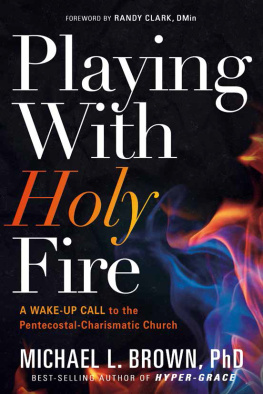
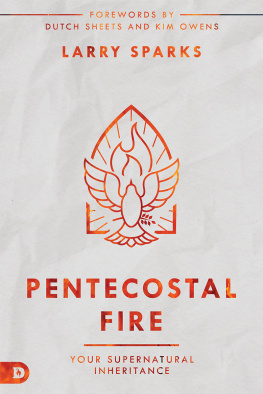
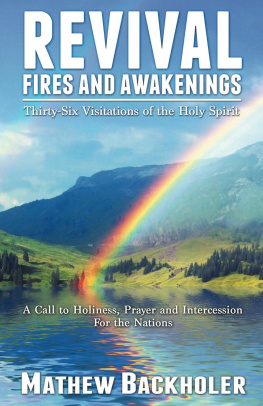
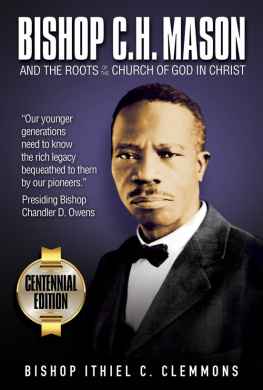
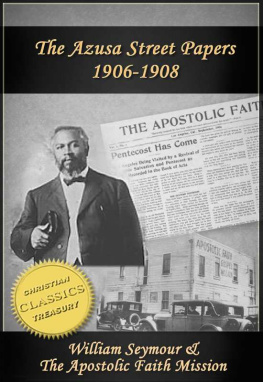
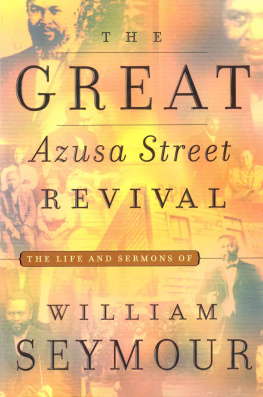

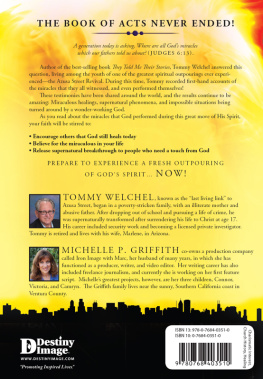
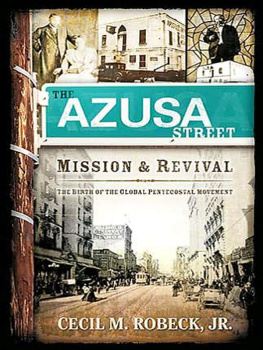



 ___________________________
___________________________